
kscarbel
-
Posts
1,114 -
Joined
-
Last visited
-
Days Won
8
Content Type
Profiles
Forums
Gallery
Events
Blogs
BMT Wiki
Collections
Store
Posts posted by kscarbel
-
-
- Popular Post
The second generation Mack F-model, the Interstater, made the company a bundle. Countless fleets like Overnite, Matlack and Chemical Leaman made the F-model their mainstay tractor, and their accountants smiled with each passing year.
While the Cruise-Liner had the glamour role as the big Mack west coast type aluminum cab COE (what F-model driver didn't want to move up to a Cruise-Liner?), the F-model was as indestructable as the R-model.
Unlike the R, the F-model cab was produced by Mack itself in Allentown. It's assembly was an impressive sight to see.
I recall at least one Matlack order that had the optional rear cab air spring suspension in lieu of the fixed mounting.
-
 4
4
-
Well just spoke with Nextran in Miami and told me i need to buy four windows in a crate.
If the Mack dealer is absurdly trying to force you to buy the entire package (crate) quantity of four windshields when you of course only need one, then you need to call Volvo customer satisfaction (I mean Mack, er, whatever) at +1 (866) 298-6586 and complain. I suspect they can help you purchase just one.
What kind of dealer would make a customer buy 4 right and 4 left windshields in order to get one of each? Volvo's Mack district parts rep condones this activity?
-
The typical European set-up:
Oversize left and right rearview mirrors
Over-size left and right side curb view mirrors (spot mirrors)
Passenger-side wide-angle close proximity mirror (above the door window)
Forward-mounted wide-angle close proximity mirror
All electrically actuated and heated for ease of use and efficiency.
Superb visibility inherent of a COE cab design.
-
In every aspect, the cabover is the optimum truck design. That's why it is the most popular heavy truck type in every global region (outside of the US and Canada).
I personally much prefer a COE over a conventional. The MH Ultra-Liner was the Cadillac of yesterday. The new Scania R series and MAN TGX are today the epitome of truck engineering (with a "special mention" to the Freightliner Argosy II) .
-
My understanding is that CAT wanted to pull the plug, but the Cat dealers (there's just a handful of dealer groups that dominate the country) put CAT against the wall, arguing that because CAT had forced them to invest deeply in all-new "truck shops" in support of the new CAT truck range, cancelling the CAT truck after that significant investment was out of the question.
One thing's for sure - the CAT trucks aren't selling. With an SCR engine, there's nothing actually wrong with the truck though.
-
A rare Mack overdrive Maxitorque transmission is the 7-speed TRDLG1070.
-
I was hoping Navistar and Cat would develop a non-SCR engine. I think everyone "caved in" on SCR as an easy way to meet emissions regs and were tired of "spending $$". I saw a chart showing cost versus emissions reduction....the cost was ASTRONOMICAL compared to the VERY SMALL amount of emissions improvement. We can thank EPA for these regs and increased costs. I think the engine OEs will ultimately develop a non-SCR in the coming years. Prior to 2010, the OEs were VERY CLOSE to meeting emissions without SCR. I think the best engines (reliability, emissions, smokeless, and fuel economy) were the early 2000 engines.
SCR is the best way with "current available technology" to satisfy EPA2010 requirements. The Europeans have been ahead of us on SCR and already confirmed this.
Massive EGR (EGR levels from 35% to 50%) results in massive heat dissipaton headaches. For one thing, require larger radiatiors and inherently massive truck redesigning to accomodate these larger cooling packages.
SCR is far more convenient. Adding a small AdBlue (urea) tank is easily done. And the engine can breath, resulting in better performance and fuel economy.
Higher injection pressures is promising. Extreme high pressure (common rail) injection helps prevent PM levels from increasing with Massive EGR, so that oil change intervals won’t shorten.
With that in mind, Scania has reached Euro-6 (extremely close to EPA2010) using ultra high pressure injection in excess of 2400bar with EGR/SCR and a VGT, but without the need for a DPF, resulting in a significant savings in purchase price and truck weight, and simplification of the truck design.
-
 1
1
-
-
With their tail between their legs, Navistar went looking for someone/anyone to provide a compliant engine.
Only way they could stay relevant in the big truck market
No, not at all. Ustian thought he could take MAN's "Massive EGR" (MEGR) technology and ramp it up to EPA2010 (Euro 6).
MAN had realized their advanced EGR technology (as it stands today) was only good up to Euro-5 (roughly EPA2007). How Ustian thought he could be smarter than MAN's EGR engineers is the real mystery.
What with the Germans and Swedes using their own engines (Freightliner, Western Star, Mack), Ustian wanted to emulate Paccar and have their own proprietary engine line-up. That much made reasonable sense.
MAN was interested in licensing the D20 and D26 to Navistar, provided they didn't sell them outside the US market. It was a win-win deal. MAN indeed designs some of the most advanced heavy truck engines in the world. But it was Ustian that thought he could take these engines in EGR spec from Euro-5 to Euro-6. MAN went to SCR for Euro-6 on its own trucks.
-
International Harvester had a long and close relationship with Cummins and Detroit Diesel for truck power (but of course now Detroit Diesel is merely a Mercedes-Benz engine with a DD nameplate - another U.S. truck-related company purchased by the Europeans).
The company's own mid-range engines like the DT466 originated from the company's legendary agricultural and construction machinery units (their sale in 1985 and 1982 respectively, another sad day and a major step backward for American industry).
IH's TD-20H was so good that Dressta was still producing this dozer thru 2005.
The massive TD-24 with its I-H D-1091 diesel, for a time the world's most powerful crawler, was sold around the world. Interestingly, it was started on gasoline and then switched to diesel after it warmed up (as opposed to CAT which used a separate 2-cylinder starting engine).
Both the 442B PayScraper and the 50-ton 350B PayHauler off-highway dump were best-in-class. -
Transport Topics / April 11, 2013
Navistar has re-launched its classic International 9900i tractor and PayStar 5900 SBA vocational models featuring the Cummins ISX15 engine equipped with selective catalytic reduction (SCR) technology to make it compliant with heavy-truck emission regulations.
Offered with ratings from 400 to 600 hp with 1,450 to 2050 lb.-ft worth of torque, Navistar said the Cummins ISX15 will be the only engine available for the 9900i, while the PayStar 5900 can be spec’d with either the ISX15 or the OEM’s own MaxxForce 13 SCR-equipped engine.
The truck maker unveiled its Cummins-powered vocational models at ExpoCam, Canada's National Truck Show, in part to highlight the company’s presence north of the border, according to Mark Belisle, president of Navistar Canada.
“Canada can be tough on a vehicle and the power of the ISX15 makes our already rugged vehicles adaptable for any environment,” he added. “And, with more than 7,000 vehicles on the road today, the 9900i and 5900 SBA have proven durability.”
Navistar noted that production of both vehicles began earlier this month, some four months after the first International ProStar highway tractor equipped with the Cummins ISX15 with SCR rolled off the assembly line. -
Sorry to break the news to you but the axle in your RD was cast in Brazil.
Westport Axle's Mack chassis assembly plant is using axles produced by Brazil's SIFCO. SIFCO, Volvo's assembled front axle supplier in South America since 1979, and Swedish production from 1995, replaced Dana for Mack brand axle production from May, 2004 (Westport and SIFCO are both owned by Grupo Brasil).
But given he said that his front axle was stamped "Mexico", that sounds like the Sypris Solutions (under their Sypris Technologies brand) plant in Toluca, Mexico.
Dana sold several plants to Sypris in 2004, and then outsourced axle component production to them. Dana, an example of what bad management can do to a legendary U.S. company.
https://www.sypristechnologies.com/products#IBeams
http://www.sifco.com.br/ingles/produtos/suspencao_dianteira.htm
From 2008, Meritor began supplying front axles to Volvo from a new plant in Monterrey, Mexico for Mack-brand chassis.
http://fleetowner.com/management/arvinmeritor_mexico_axle_plant_0827
-
Didnt oshkosh just lay off close to 1000 people?
Altogether, Oshkosh has over 10 business units. One unit, Oshkosh Defense, plans to lay off 900 people in anticipation of a decline in military vehicle orders (see news article below). As the demand for military vehicles has forever inherently been a cyclical business, this is all quite normal. Most importantly, this business unit is extremely profitable. Note that the unit will still have 2,800 employees.
Note that the unit's 1st qtr earnings rose 20% despite weaker sales, which demonstrates the same prudent management as seen at Paccar
_____________________________________________________
Oshkosh to Cut 900 Jobs in Defense Division
WSJ / April 9, 2013
Oshkosh Corp. said Tuesday it plans to cut 900 positions in its defense division this summer on expectations domestic demand for its military vehicles will decline significantly as the year progresses.
The specialty-truck maker said its defense-division workforce would shrink by about 700 hourly and 200 salaried positions through July. After these layoffs, Oshkosh will have about 2,800 defense employees.
The Wisconsin-based company expects daily production volumes to decline by about 30% this summer. The company tied the decline to the reduction in government defense budgets and a return to peacetime spending levels as the U.S. winds down war activities.
"These were difficult, but necessary decisions," said John Urias, Oshkosh's president of defense, adding that the company tried to cushion the blow by bringing back in some work that had been outsourced.
Oshkosh has registered growth in its nondefense segments, aided by a nascent recovery in the housing market. In January, the company reported its fiscal-first-quarter earnings jumped 20% despite weak defense results.
-
does hyundai make their own HD engines or use somebody elses?
Hyundai designs and produces their own heavy truck engines, which incorporate Jacobs engine brakes.
-
A friend recently purchased a CF fire truck with a Pierce body that was one of the last CF cabs made by Mack. He tells me that it is equipped with a Scania engine. I had no idea that Mack ever used Scania engines in the CF chassis. Is this a "one off" or are there others out there?
You'd better double check what he said. Mack did build MB-487F, MC-487F and R-487F fire apparatus with Scania power. But not a Scania-powered CF according to production records.The last CFs were built in 1990, and the final Mack-Scania engine model (E4-210) was no longer available at that time.
-
Mind you, the USA and Canada are the number 1 truck markets in the world!
Au contraire Pierre, China is by far the largest truck market in the world now.
U.S. 2012 class 8 truck sales were 194,715.
U.S. 2012 class 7 truck sales were 46,854.
Total: 241,569
Meanwhile, Chinese truckmakers from 2010 have been producing a total of 600,000 to 800,000 class 7 and 8 trucks annually.
-
I again have to say its really sad what is happening here. The man that indeed lied about EGR and other matterss, former CEO Dan Ustian, gets to walk free while the innocent employees under his arrogant reign now will suffer as a result of their company paying huge sums in legal fees and possibly settlements all because of Ustian.
Ustian ran the company into the ground while living in a fictional world about the current capabilities of EGR technology) now the company. Now adding pain to misery, just when the employees are trying to get the bildge pumped out, the results of Ustian's madness rear their ugly head again with this lawsuit.
Ustian should go to jail for the billions he cost Navistar. He's no better than Bernard Madoff.
The big question now is Ustian's right-hand man, GM car guy Troy Clarke, who is now running the show (just unbelieveable). He was right behind Ustian promoting EGR all the way up to last August when Ustian was finally shown the door (at the very least 2 years late) by an ignorant board.
-
 1
1
-
-
Navistar Sued by Shareholders for Fraud
April 10, 2013
A group of shareholders has filed a class-action lawsuit against Navistar International Corp. alleging that the OEM essentially lied to investors about its efforts to achieve compliance with EPA 2010 diesel-engine emissions rules.The suit was filed in the U.S. District Court for the Northern District of Illinois on behalf of purchasers of common stock of Navistar International Corp. during the period between Nov. 3, 2010, and Aug. 1, 2012, inclusive.
Contacted by FleetOwner for comment on the lawsuit, Navistar’s manager of external communications Elissa Koc responded that “As a matter of policy, we do not comment on pending litigation.”
According to Ryan & Maniskas, LLP, the law firm that filed the suit, the complaint alleges that throughout that period of time, “the company [Navistar] issued materially false and misleading statements regarding the company’s business and financial prospects…. [and] the company misrepresented and/or failed to disclose that:(1) Navistar’s attempted methods to achieve compliance with EPA guidelines in truck manufacturing had failed and Navistar would be forced to revise its plan to meet guidelines, incurring enormous costs to the company;
(2) Navistar did not have engines ready to meet the 2010 EPA standards; and
(3) Navistar’s filings with the Securities and Exchange Commission contained incomplete and misleading disclosures, including statements about the costs of recalls and details of various debts.The plaintiffs’ law firm has launched a dedicated website where members of the class defined by the suit can obtain more information about joining the class action.
Last July, Navistar declared it was giving up its attempts to comply with diesel-emission regs by using exhaust-gas recirculation (EGR) technology alone as opposed to integrating selective catalytic reduction technology (SCR) as all its heavy-duty competitors had down ahead of the EPA 2010 rules.
As a result, by last September, Navistar had reached an agreement with Cummins by which it would again offer SCR-equipped Cummins engines in its International trucks.
Last month, CEO Troy Clarke told the Wall Street Journal that the company was considering closing engine plants. Navistar has three facilities building engines.
“We build engines in three places and none of them is fully utilized. You just can’t make any money doing that,” Clarke told the Journal in an interview at the Mid-America Trucking Show in Louisville, Ky. “Underutilized manufacturing capacity is just a cost and it is a cost that we don’t have to bear.” -
On 4/10/2013 at 2:19 PM, chuckyr said:
chuckyr, on 10 Apr 2013 - 14:11, said:
Scania didn't offer an intercooler on it's American spec diesels.
Scania still sells trucks in Mexico. Scanias can be scene along the boarder towns of Arizona and Texas and a few miles in to the USA.
You're absolutely right. Scania is very popular in South America with a long time plant in Brazil. In fact the US and Canada are the only global regions where Scania is not represented. From Ireland to Moscow to Malaysia to South Africa, Scania is everywhere.
But the U.S. market Scanias did indeed have an intercooler. These were DSC11s, "C" meaning intercooled. The DSC/DTC engines of the time went up to 400 horsepower, and the V-8 was available up to 500hp..
-
While mindlessly surfing the web, I came across a site that stated that the Sao Paulo, Brazil Fire Department had recently purchased 70 fire engines built
on Ford Cargo chassis. I didn't know that Ford still built the Cargo so I went back to the web and found pictures of 2012-2013 Cargos. To me they look pretty
impressive; very similar to the Hyundai Trago. Between the Cargo and the Ranger, Ford is building some nice trucks overseas. Maybe, someday, as part of
Ford's one world program these vehicles will be available in the U.S.
bulldogboy
This page has info on the current Ford Cargo.
http://www.bigmacktrucks.com/index.php?/topic/29676-mack-vs-volvo-11-13-16-l/page-2
-
There's a real tragedy taking place here. The man that single-handedly led Navistar down the wrong path is Dan Ustian. In a perfect world, any and all lawsuits would be brought against him. However, after running the company into the ground financially, he's allowed to quietly walk away with a $7.9 million golden parachute, and without paying any price for his errant actions. Ustian should be held fully accountable for his mistakes.
-
Hi from the UK, your information is incorrect. The DS8 Scania engine was a 6 cylinder (the 8 denotes the litre capacity ie 8000cc) they were a very reliable unit but were only around 170hp similar to the Mack 673. It was used in road trucks but also very succesfully in Moxy off road dumpers. Geoff Makinson R773
My friend, sorry for the typo. I fixed my original post.
And for those interested, Scania replaced the DS8 in 1985 with the new 245-275 horsepower 8.5L (519 cu.in.) DS/DSC9 6-cylinder engine featuring individual cylinder heads, a Bosch P7100 pump and other upgrades. However Mack decided not to purchase this new engine.
Instead, Mack introduced the 4VH EM6-225L (1750rpm), the successor to the 2VH EM6-225R (1700rpm). The 2VH EM6-225 (2100rpm) and conventional torque rise 2VH E6-200 (for multi-speed and automatic transmissions) had been in that power range as well.
I personally would have preferred a 225-275 horsepower Mack-Scania engine in an 8.5-liter displacement, rather than a de-rated 11 liter (672 cu.in.) engine.
-
Huh my 05granite has an18000 front axle and in the center of the axle is stamped Mexico wonder why ?axle made in Mexico and assembled her in USA?
Your front axle was produced in Toluca, Mexico by Sypris Solutions.
-
Nice, In looking thru the other photos on the link given, pay particular attention to rear axles & spring / beam mounting. This is in fact the last model of the LR series known as the LYSW. The rear axles & combination spring & walking beam is what became the rears for the M-45SX. Of the tandem axle LR's the LY is one of the rarest,
Ap40
-


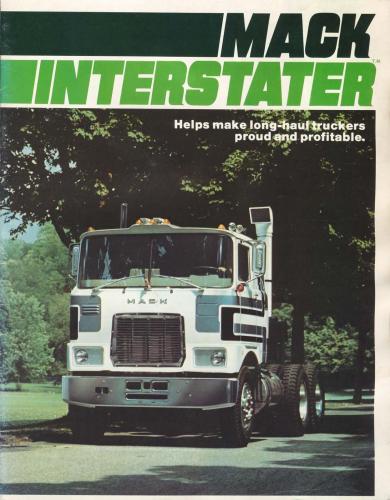
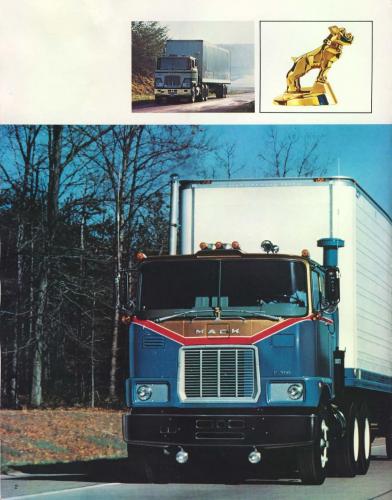
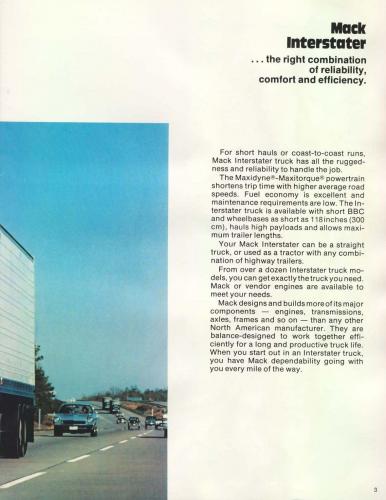
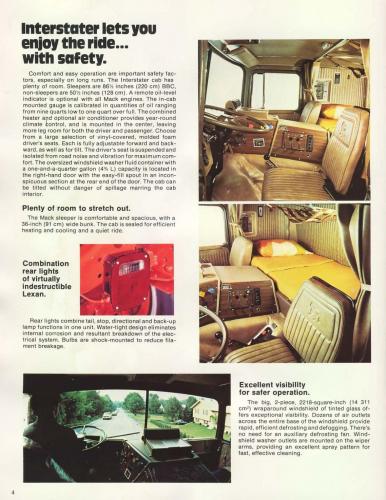
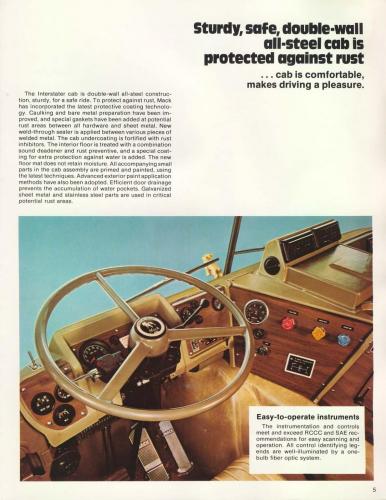
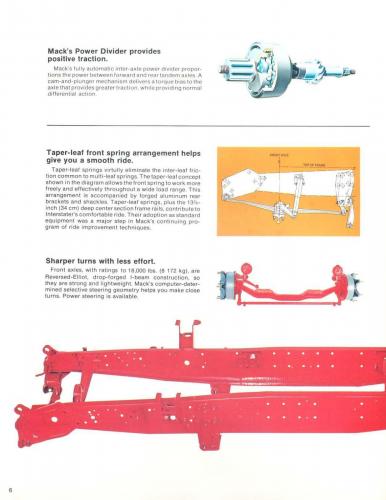
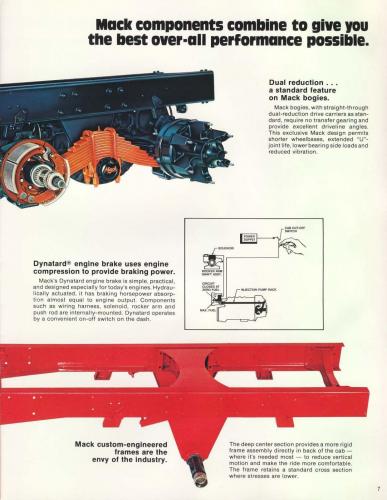
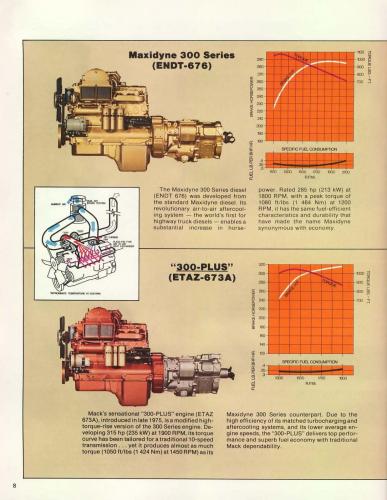
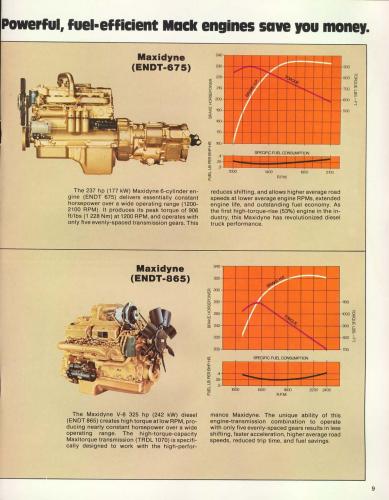
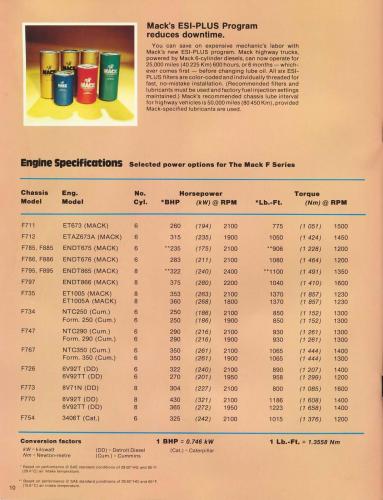
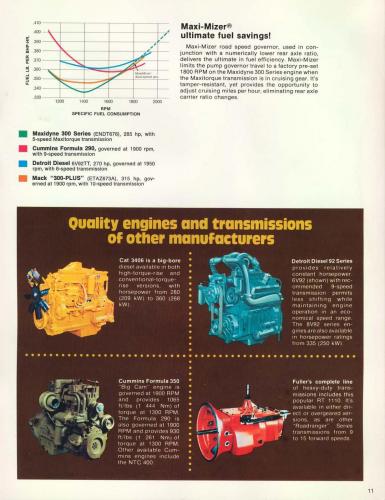
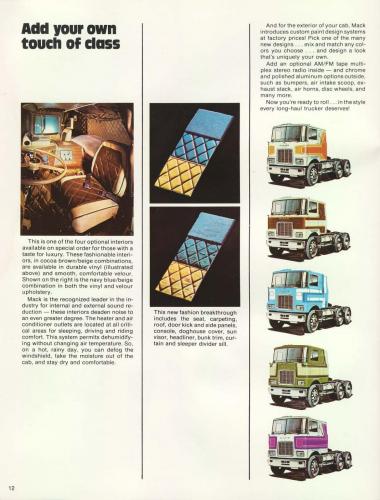
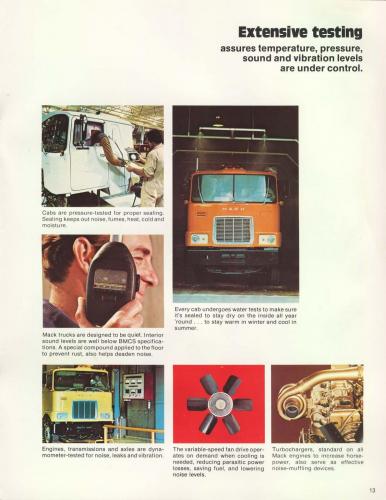
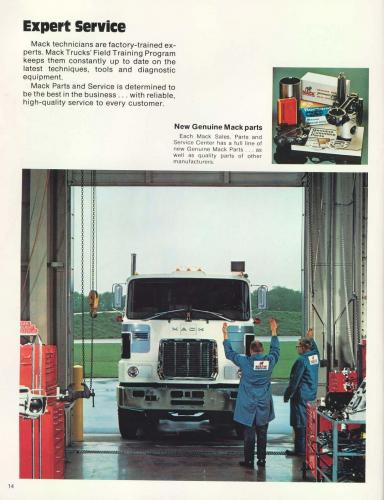
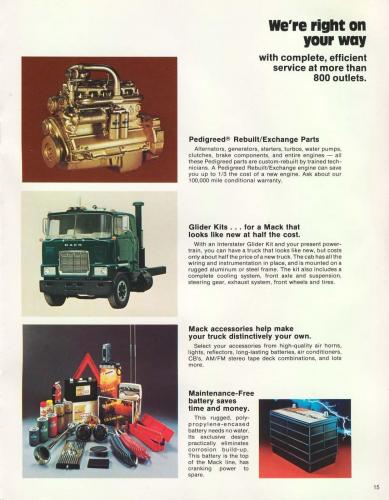
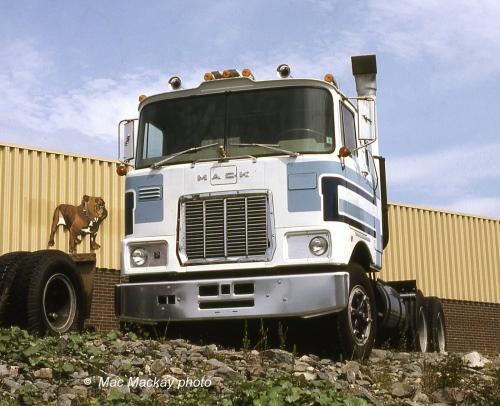
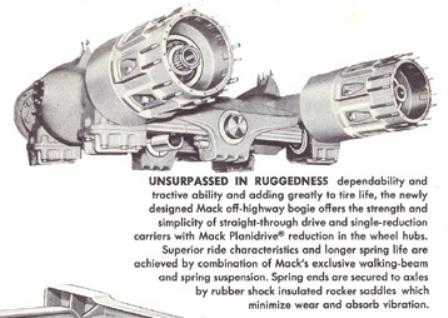
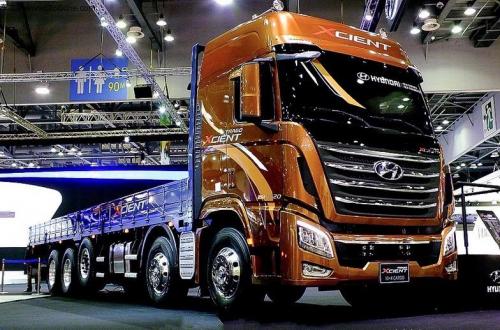
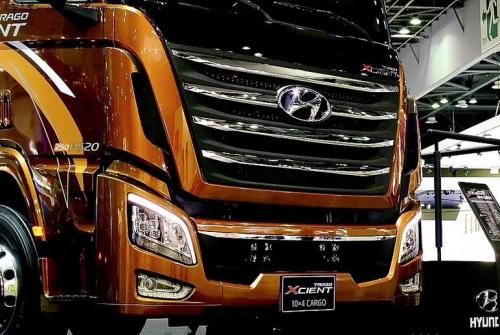
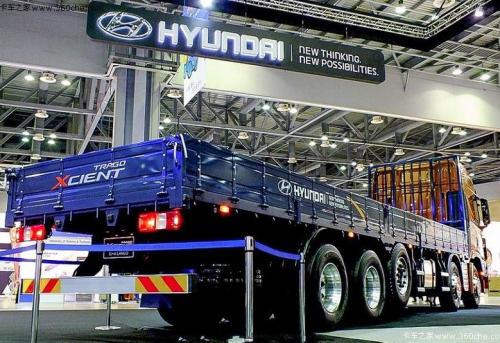
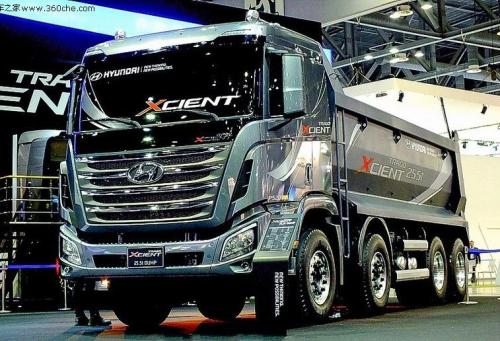
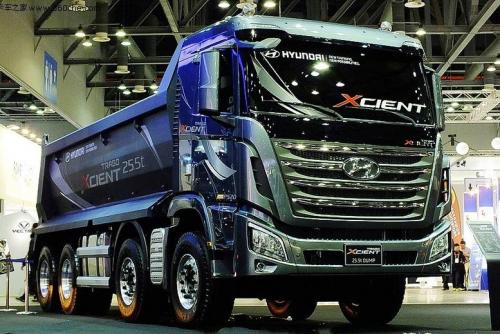
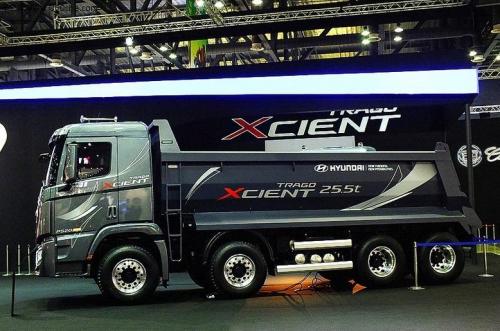
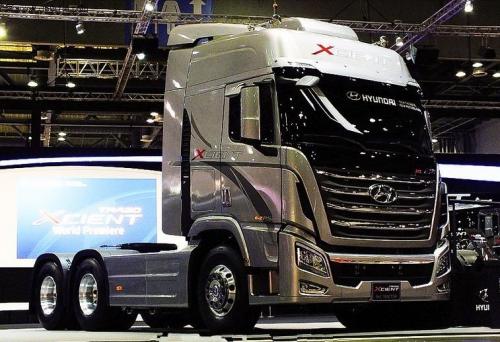
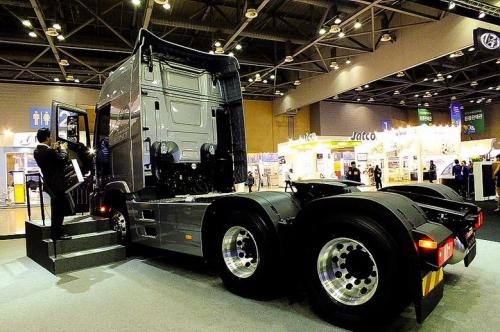

MACK M 75 SX pics
in Antique and Classic Mack Trucks General Discussion
Posted
Speaking specifically of the M-75SX:
Cummins VTA1710P (700hp) with Allison DP8961
or
Detroit 16V-71T (700hp) Twin Disc TAC3100 or Clark Powershift 16000 series
Cummins TA1710C (800hp) "
Detroit 16V-71T1 (800hp) "